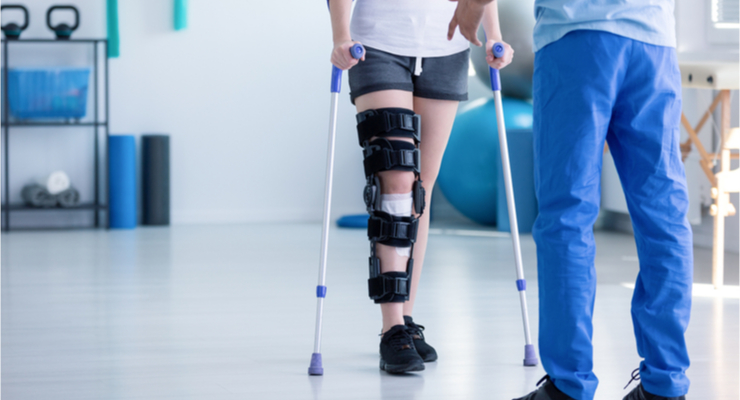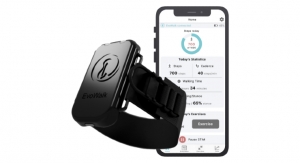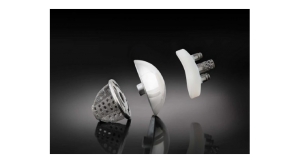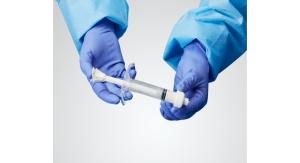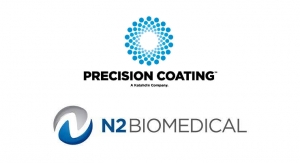Hatem Zeine, Founder and President, Ossia09.13.21
In the past decade, the sports and fitness industry has fully embraced sensor technology to create wearable devices that inspire activity and improve health and physical performance. These devices are designed to collect data and deliver information to optimize movement and certain behaviors. First appearing as wristbands, clip-ons, and even rings and necklaces, we’re now seeing products with biosensor threads woven into fabrics, like pants and socks, sensors in shoes, and sensors in skin patches.
It doesn’t take much imagination to make the leap from athletic device wearables to orthopedic applications. Sensors in a pair of yoga pants can deliver not only athletic performance metrics, but also data that would be enlightening to someone who is in the business of knee brace innovation, as one example.
One hurdle with innovating in either industry is the challenge of power.
What are our current options? Most device manufacturers are focused on rechargeable battery power. But there’s also energy harvesting, also called power harvesting, that is gaining popularity. There’s some innovation around near-field communication wireless. And then there’s RF-based wireless power over air. Let’s look at the pros and cons of each one.
Batteries and Medical Devices
Batteries are accessible, familiar and provide the power most small devices need. However, they are also bulky, which limits how they can be worn. They eventually need replacement. They can be unreliable, heat up and even fail. And frequently charging batteries is a burden to the wearer.
Energy Harvesting and Medical Devices
Energy harvesting technology, which pulls energy from heat, wind, movement, and other forms of ambient energy, seems promising, but it is often unstable, provides very low power, and requires space to store the energy, which in itself could be just as bulky as the battery. Energy harvesting might become more of a compliment to other power sources, rather than an alternative.
Near-field Communication and Medical Devices
Some newer wireless, battery-free sensor networks rely on near-field communication for their wireless power needs. Near-field is an exciting development in that it does not need batteries or space to save energy, but it does require the display — or network of sensors — to be very close to each other, usually a few centimeters. This is limiting for medical device designers.
RF-based Wireless Power Over Air
RF-based (radio-frequency based) wireless power over air has demonstrated a lot of success in other applications, such as within inventory tracking systems and for electronic shelf labels. With no batteries or charging required, and no need to store power, the fitness or healthcare device can be very small and unobtrusive, which may lead to more consistent use. Within a wireless power environment, such as home, work, or while in transport, the devices will receive energy automatically when they need it; no remembering to plug in or place on a pad to charge at all.
Wireless Power Changes the Orthopedic Innovation Game
Whether you’re in the business of fitness device or orthopedic device innovation, wires and batteries are not the future. In order to encourage people to actually wear the device on a consistent basis, it must be small, lightweight and unobtrusive. Radio frequency-based wireless power over air is the only technology that exists today that can solve this problem.
Not only can RF-based wireless power transmission enable device innovation, it can also enable smart networks that provide healthcare professionals, therapists, and even coaches the information they need to gain a more complete picture of an individual’s physical needs.
Making Deeper Connections
Imagine biosensors not only providing information about movement patterns that can lead to diagnosis, motorized therapies, pain therapy and alignment correction, but also an understanding of the individual’s heart rate, body temperature, respiratory rate, and glucose and lactate levels. Connecting the dots between, say, the ache of arthritis after grasping an object and what’s happening on a chemical level could open the door to a whole new approach to orthopedic medicine. Wireless power enables these connections.
Data Beyond the Exam Room
Diagnosis and analysis can go beyond the exam room, as well. Wirelessly powered diagnostic wearables that the patient will actually wear on a continuous basis will provide healthcare professionals a more complete picture of what’s happening with an individual’s bones, joints, and ligaments as they move through a normal day and week. It enables remote or virtual healthcare systems. Also, long-term remote monitoring of the healing process after surgery or while wearing a brace is made more possible.
With RF-based wireless power, medical device innovators are virtually unlimited by the number of biosensors that they can weave together for a device designed to inform additional innovations, create custom wearables to diagnose specific disease states, and even develop orthopedic devices that communicate in real time with patient and doctor.
The Future of Orthopedic Device Innovation Is Here
The sports and athletic wearable devices that rely on biosensors today can range from entertaining to truly life transforming. With RF-based wireless power over air, at a distance, as a key tool in innovation, not only will the sports wearables industry accelerate, but so will the healthcare application of orthopedic devices. The technology exists. It’s just a matter of awareness and adoption.
Hatem Zeine is the founder and president of Ossia.
It doesn’t take much imagination to make the leap from athletic device wearables to orthopedic applications. Sensors in a pair of yoga pants can deliver not only athletic performance metrics, but also data that would be enlightening to someone who is in the business of knee brace innovation, as one example.
One hurdle with innovating in either industry is the challenge of power.
What are our current options? Most device manufacturers are focused on rechargeable battery power. But there’s also energy harvesting, also called power harvesting, that is gaining popularity. There’s some innovation around near-field communication wireless. And then there’s RF-based wireless power over air. Let’s look at the pros and cons of each one.
Batteries and Medical Devices
Batteries are accessible, familiar and provide the power most small devices need. However, they are also bulky, which limits how they can be worn. They eventually need replacement. They can be unreliable, heat up and even fail. And frequently charging batteries is a burden to the wearer.
Energy Harvesting and Medical Devices
Energy harvesting technology, which pulls energy from heat, wind, movement, and other forms of ambient energy, seems promising, but it is often unstable, provides very low power, and requires space to store the energy, which in itself could be just as bulky as the battery. Energy harvesting might become more of a compliment to other power sources, rather than an alternative.
Near-field Communication and Medical Devices
Some newer wireless, battery-free sensor networks rely on near-field communication for their wireless power needs. Near-field is an exciting development in that it does not need batteries or space to save energy, but it does require the display — or network of sensors — to be very close to each other, usually a few centimeters. This is limiting for medical device designers.
RF-based Wireless Power Over Air
RF-based (radio-frequency based) wireless power over air has demonstrated a lot of success in other applications, such as within inventory tracking systems and for electronic shelf labels. With no batteries or charging required, and no need to store power, the fitness or healthcare device can be very small and unobtrusive, which may lead to more consistent use. Within a wireless power environment, such as home, work, or while in transport, the devices will receive energy automatically when they need it; no remembering to plug in or place on a pad to charge at all.
Wireless Power Changes the Orthopedic Innovation Game
Whether you’re in the business of fitness device or orthopedic device innovation, wires and batteries are not the future. In order to encourage people to actually wear the device on a consistent basis, it must be small, lightweight and unobtrusive. Radio frequency-based wireless power over air is the only technology that exists today that can solve this problem.
Not only can RF-based wireless power transmission enable device innovation, it can also enable smart networks that provide healthcare professionals, therapists, and even coaches the information they need to gain a more complete picture of an individual’s physical needs.
Making Deeper Connections
Imagine biosensors not only providing information about movement patterns that can lead to diagnosis, motorized therapies, pain therapy and alignment correction, but also an understanding of the individual’s heart rate, body temperature, respiratory rate, and glucose and lactate levels. Connecting the dots between, say, the ache of arthritis after grasping an object and what’s happening on a chemical level could open the door to a whole new approach to orthopedic medicine. Wireless power enables these connections.
Data Beyond the Exam Room
Diagnosis and analysis can go beyond the exam room, as well. Wirelessly powered diagnostic wearables that the patient will actually wear on a continuous basis will provide healthcare professionals a more complete picture of what’s happening with an individual’s bones, joints, and ligaments as they move through a normal day and week. It enables remote or virtual healthcare systems. Also, long-term remote monitoring of the healing process after surgery or while wearing a brace is made more possible.
With RF-based wireless power, medical device innovators are virtually unlimited by the number of biosensors that they can weave together for a device designed to inform additional innovations, create custom wearables to diagnose specific disease states, and even develop orthopedic devices that communicate in real time with patient and doctor.
The Future of Orthopedic Device Innovation Is Here
The sports and athletic wearable devices that rely on biosensors today can range from entertaining to truly life transforming. With RF-based wireless power over air, at a distance, as a key tool in innovation, not only will the sports wearables industry accelerate, but so will the healthcare application of orthopedic devices. The technology exists. It’s just a matter of awareness and adoption.
Hatem Zeine is the founder and president of Ossia.

